Caglar Tirkaz
Phonetically-Augmented Discriminative Rescoring for Voice Search Error Correction
Jun 06, 2025Abstract:End-to-end (E2E) Automatic Speech Recognition (ASR) models are trained using paired audio-text samples that are expensive to obtain, since high-quality ground-truth data requires human annotators. Voice search applications, such as digital media players, leverage ASR to allow users to search by voice as opposed to an on-screen keyboard. However, recent or infrequent movie titles may not be sufficiently represented in the E2E ASR system's training data, and hence, may suffer poor recognition. In this paper, we propose a phonetic correction system that consists of (a) a phonetic search based on the ASR model's output that generates phonetic alternatives that may not be considered by the E2E system, and (b) a rescorer component that combines the ASR model recognition and the phonetic alternatives, and select a final system output. We find that our approach improves word error rate between 4.4 and 7.6% relative on benchmarks of popular movie titles over a series of competitive baselines.
Bootstrapping NLU Models with Multi-task Learning
Nov 15, 2019

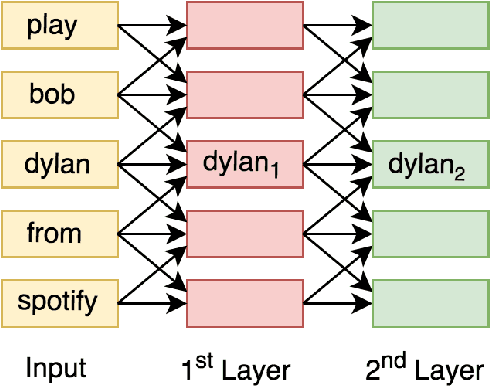
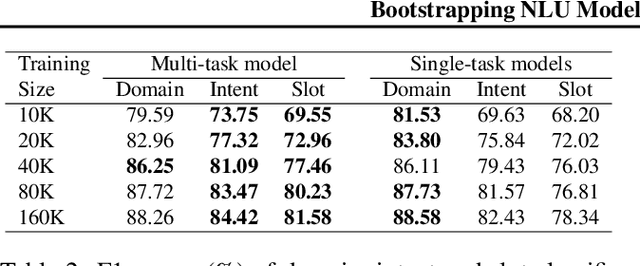
Abstract:Bootstrapping natural language understanding (NLU) systems with minimal training data is a fundamental challenge of extending digital assistants like Alexa and Siri to a new language. A common approach that is adapted in digital assistants when responding to a user query is to process the input in a pipeline manner where the first task is to predict the domain, followed by the inference of intent and slots. However, this cascaded approach instigates error propagation and prevents information sharing among these tasks. Further, the use of words as the atomic units of meaning as done in many studies might lead to coverage problems for morphologically rich languages such as German and French when data is limited. We address these issues by introducing a character-level unified neural architecture for joint modeling of the domain, intent, and slot classification. We compose word-embeddings from characters and jointly optimize all classification tasks via multi-task learning. In our results, we show that the proposed architecture is an optimal choice for bootstrapping NLU systems in low-resource settings thus saving time, cost and human effort.
A Morphology-aware Network for Morphological Disambiguation
Feb 13, 2017
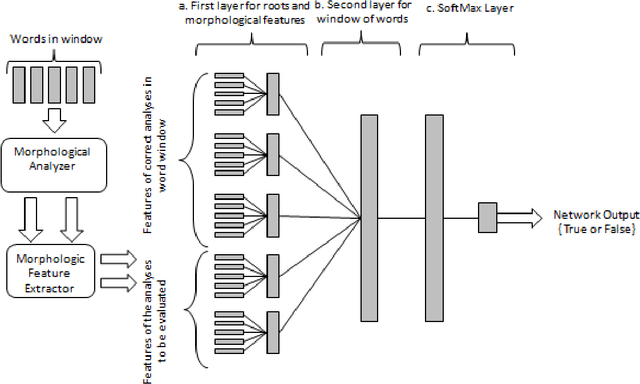


Abstract:Agglutinative languages such as Turkish, Finnish and Hungarian require morphological disambiguation before further processing due to the complex morphology of words. A morphological disambiguator is used to select the correct morphological analysis of a word. Morphological disambiguation is important because it generally is one of the first steps of natural language processing and its performance affects subsequent analyses. In this paper, we propose a system that uses deep learning techniques for morphological disambiguation. Many of the state-of-the-art results in computer vision, speech recognition and natural language processing have been obtained through deep learning models. However, applying deep learning techniques to morphologically rich languages is not well studied. In this work, while we focus on Turkish morphological disambiguation we also present results for French and German in order to show that the proposed architecture achieves high accuracy with no language-specific feature engineering or additional resource. In the experiments, we achieve 84.12, 88.35 and 93.78 morphological disambiguation accuracy among the ambiguous words for Turkish, German and French respectively.
Automatically Annotated Turkish Corpus for Named Entity Recognition and Text Categorization using Large-Scale Gazetteers
Feb 09, 2017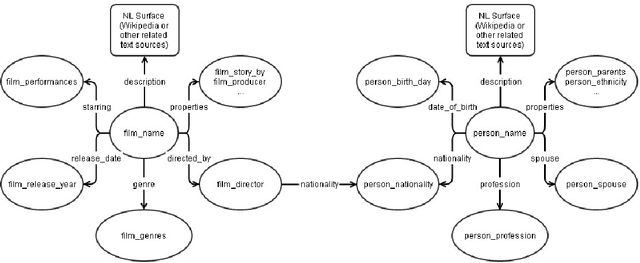
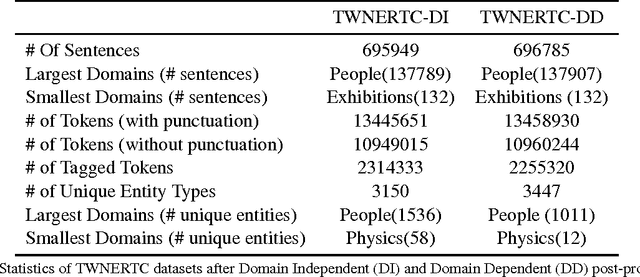


Abstract:Turkish Wikipedia Named-Entity Recognition and Text Categorization (TWNERTC) dataset is a collection of automatically categorized and annotated sentences obtained from Wikipedia. We constructed large-scale gazetteers by using a graph crawler algorithm to extract relevant entity and domain information from a semantic knowledge base, Freebase. The constructed gazetteers contains approximately 300K entities with thousands of fine-grained entity types under 77 different domains. Since automated processes are prone to ambiguity, we also introduce two new content specific noise reduction methodologies. Moreover, we map fine-grained entity types to the equivalent four coarse-grained types: person, loc, org, misc. Eventually, we construct six different dataset versions and evaluate the quality of annotations by comparing ground truths from human annotators. We make these datasets publicly available to support studies on Turkish named-entity recognition (NER) and text categorization (TC).
 Add to Chrome
Add to Chrome Add to Firefox
Add to Firefox Add to Edge
Add to Edge